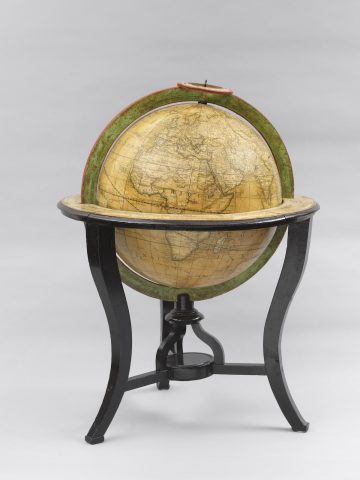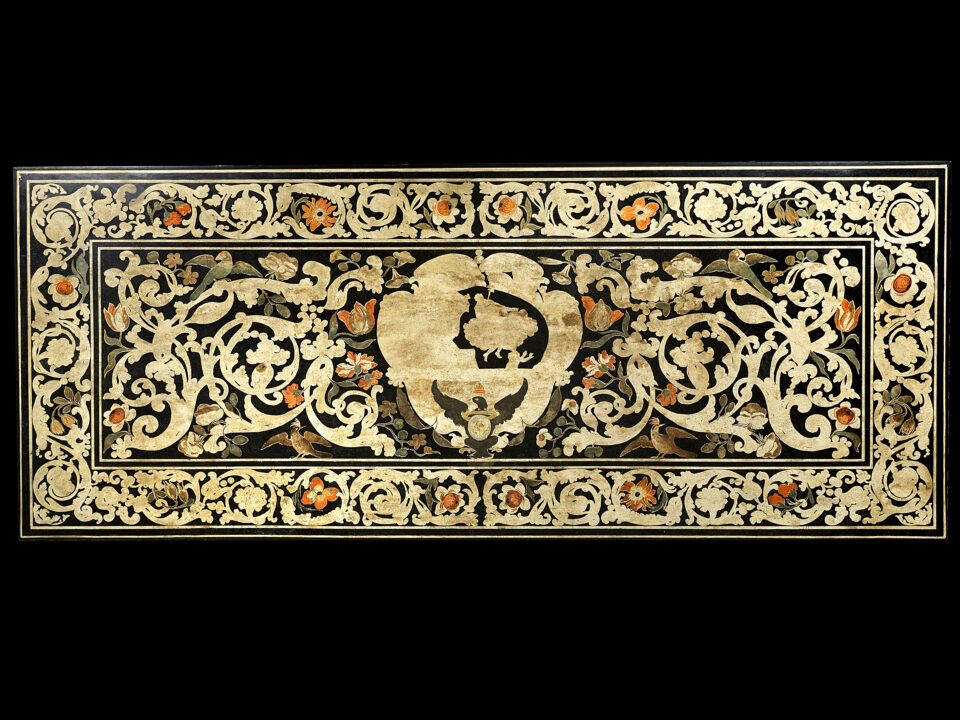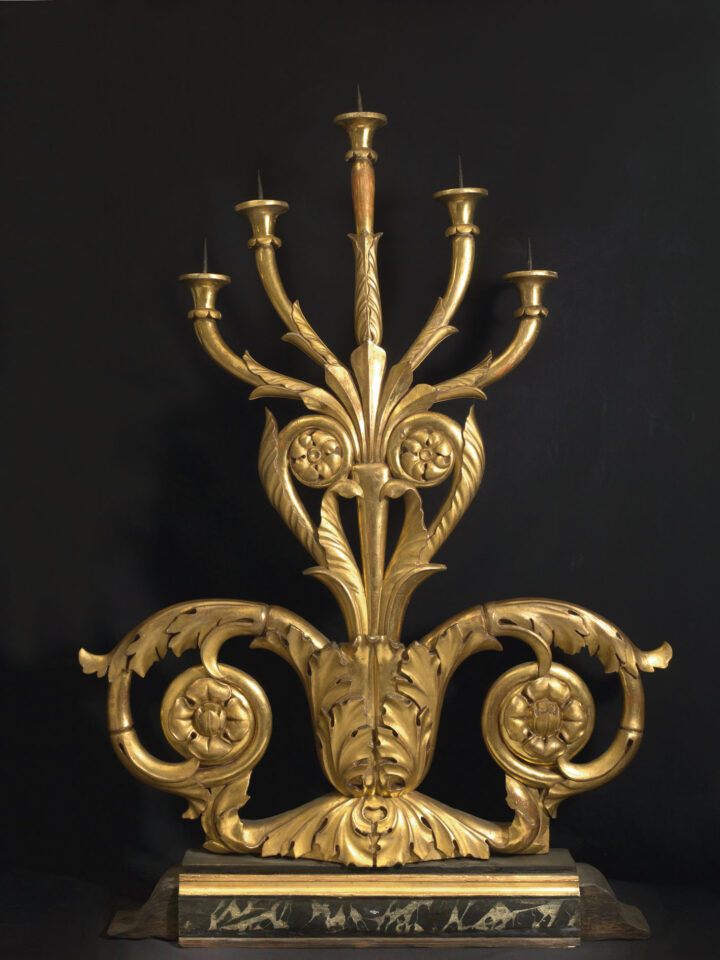FELIX DELAMARCHE E CHARLES DIEN
Paris, 1821
Globe
wood, paper; ebonised wood base
cm 60×46, cm 32,5 globe’s diameter
Made by engineer and geographer Félix Delamarche (1779-1835), son of famous eighteenth-century cartographer Charles François, in collaboration with Parisian astronomer Charles Dien (1809-1870). The sphere, covered by twelve printed gores and mounted on a ebonised wooden tripod support, contains in a scroll a long legend that mentions the discoveries of navigators and explorers James Cook and Jean-François de La Pérouse, ending with the inscription: “a paris. chez f.x delamarche et ch.les dien successeurs de sanson, bonne, robert de vaugondy, &c. &c. 1821”.
An identical piece is kept at the Museo Galileo in Florence, room III (inv. 3369; see Museo di Storia della Scienza. Catalogo, edited by M. Miniati, Florence, 1991, n. 25, p. 102).
The oldest examples of globes, or world map, that have been preserved, date back to the Renaissance. Some significant pieces are the so-called Erdapfeld, from the fifteenth century, by Martin Behaim, now at the Germanisches Nationalmuseum in Nuremberg, the Da Vinci Globe part of a private collection, made by the great artist around 1504 using two ostrich eggs, and the Hunt-Lenox Globe, made of copper, inspired by Da Vinci’s creation (New York Public Library). Unlike the first one, the other two pieces already show the discovery of the New World, with North America still missing.





